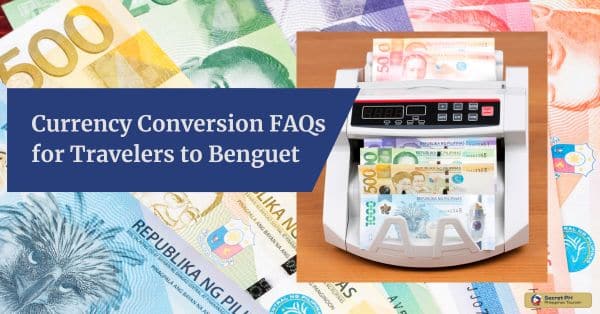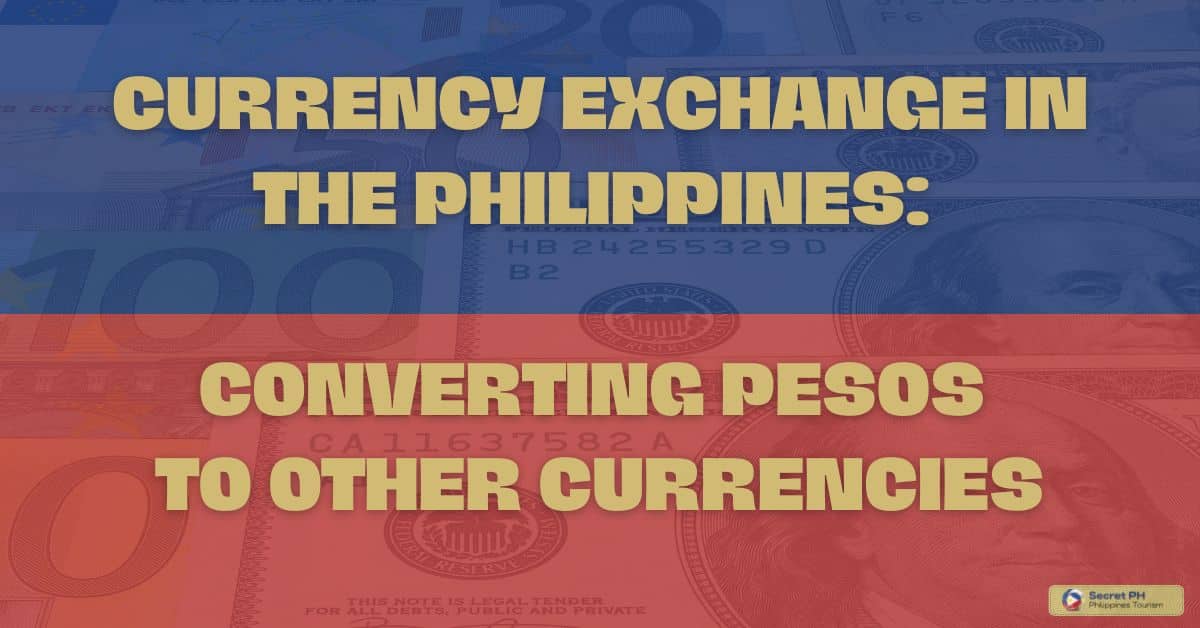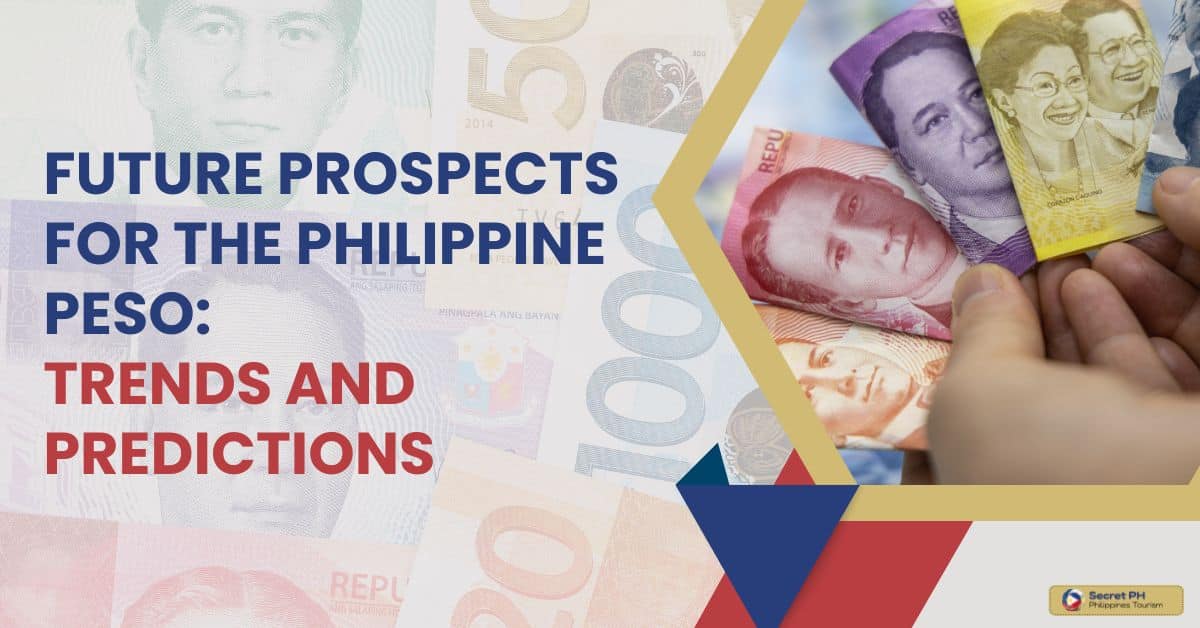Currency conversion can be confusing, especially when you’re in a foreign country. In the Philippines, it’s important to understand the different methods of currency conversion, fees and charges, and exchange rates. By researching and using insider tips like using ATMs over money changers, you can master currency conversion and enjoy your travels worry-free.
Whether you’re a frequent traveler compared to those who are more novice at converting currencies, you’ll find countless tips and advice that can help save time, energy and even hard-earned money while making any monetary transaction. So let’s get started without further ado – put up your guard and make sure that each step of the way with currency conversion is one done with confidence!

Importance of Currency Conversion When Traveling to the Philippines
When traveling to the Philippines, paying attention to currency conversion is essential for making sure your travel experience goes smoothly. Understanding the exchange rate of your home country’s currency to that of the Philippines can help you to plan out any purchases and budget accordingly while in the country.
Taking advantage of online currency converters can help you better understand how items and services are priced in the Philippines and ensure that you have an accurate comparison of your two currencies when engaging in business transactions. As a traveler, being informed about exchange rates also makes it easier to avoid getting overcharged or dealing with hidden fees.

Understanding Currency Conversion
Learning to understand currency conversion can be a valuable skill, especially if you are travelling abroad or conducting transactions in different currencies. For example, Philippines Peso exchange rate has fluctuated wildly over the last year, and it is important to stay on top of these changes. Most modern banks provide customers with reliable convertors and excellent advice when it comes to foreign currency transactions.
There are various online services that you can use to familiarize yourself with the mechanics of how currency conversion works. By understanding potential pitfalls and how rates are determined, you will be able to make smart investments and money-saving decisions in a global economy.
Explanation of currency conversion
Currency conversion is the process of transforming one currency unit into another. Primarily, this involves the Philippines Peso being converted into other world currencies like the US Dollar or Euro for example. Currency conversion has various purposes and can be done either manually or electronically. In manual conversions, Philippine Pesos are exchanged at a prevailing exchange rate to another currency.
On the other hand, with electronic conversion, there are several platforms that automatically navigate through exchange rates to arrive at the amount of currency equivalent for a desired currency conversion amount. Once the currency is converted from Philippines Pesos, it can then be used to purchase goods and services in any country of preference depending on what currency was selected during the exchange process.

Different methods of currency conversion in the Philippines
Philippines is one of the countries with the most robust and improved payment systems in the world. As a result, currency conversion becomes an essential part of foreign exchange when it comes to business transactions and money transfers. The Philippines offers 3 main methods for currency conversion: virtual wallets, physical money changers, and bank transfers.

Banks and money changers
Banks and money changers have long been an important part of Philippines culture, offering individuals and businesses access to essential financial services. From traditional in-person teller windows, to the more modern advancement of digital banking and virtual currencies, these services continue to serve an important role in economic growth and development.
As regulations shift to prioritize consumer protection and inclusion, banks become safer places for financial activities such as checking accounts, loans, or credit lines. Money changers provide customers with the convenience of a quick conversion from one currency to another, allowing them to access funds quickly for transactions that are not easily transacted online.
ATMs and credit cards
In the Philippines, Automated Teller Machines (ATMs) and credit cards are becoming increasingly popular, providing citizens with secure access to their own money as well as convenience and flexibility in making payments.
ATMs provide customers with fast and reliable financial services, while credit cards offer a wide range of tools to manage money. Both tools simplify the way people handle their finances, allowing for financial autonomy and enhanced budgeting capabilities.
Online currency conversion
Online currency conversion is an invaluable tool for those who regularly do business internationally. For example, if a Filipino person wants to transfer funds from his Philippines checking account to their American counterpart, they can easily use online currency conversion services to change the Philippines peso (PHP) into the US dollar (USD).
Not only does this save time and energy, but it also eliminates potential problems associated with manual currency conversions and allows for more seamless payments between individuals or businesses across international borders. Online currency conversion services have revolutionized how people around the world are able to work, buy, sell, and invest in any number of currencies.
Factors That Affect Currency Conversion
For anyone living or travelling in the Philippines, understanding the factors that affect currency conversion rates is essential. Knowing these fundamentals allows you to plan and accurately budget for your expense while avoiding unnecessary financial losses.
Different factors such as economic trends and changes in government policies can cause rapid fluctuations to occur in currency conversion rates. A successful transaction ultimately relies on understanding how various forces work together to create unique currency dynamics.
Exchange rates
Exchange rates between Philippines and the rest of the world can be highly volatile, regulated by several factors. These include trade deficits, government debt, central bank policies, and even geopolitical events such as wars or elections. Investors’ flight to safety during crises can cause large shifts in exchange rates as well.
Currency speculation is another factor that heavily influences exchange rates; speculators often buy large amounts of currency to take advantage of changing market conditions. Inflation and interest rate differentials between countries have been known to affect currency conversion too – higher interest rates tend to lead to higher conversions while, conversely, lower ones make a currency cheaper against other currencies.

Fees and commissions
When it comes to currency conversion, the Philippines is no exception when it comes to fees and commissions. Banks, money changers and payment providers all have a vested interest in accessing these foreign currencies and charge a fee for the exchange service. Fees or commissions are usually charged as a percentage of the amount of your transfer and could vary depending on the currency you’re exchanging.
It’s important for customers attempting to convert their money to be aware of these fees, so they can make sure they get the most competitive rate available; potential savings may exceed that taken out by fee structures. In sum, fees and commissions should always be taken into consideration when converting one currency to another.
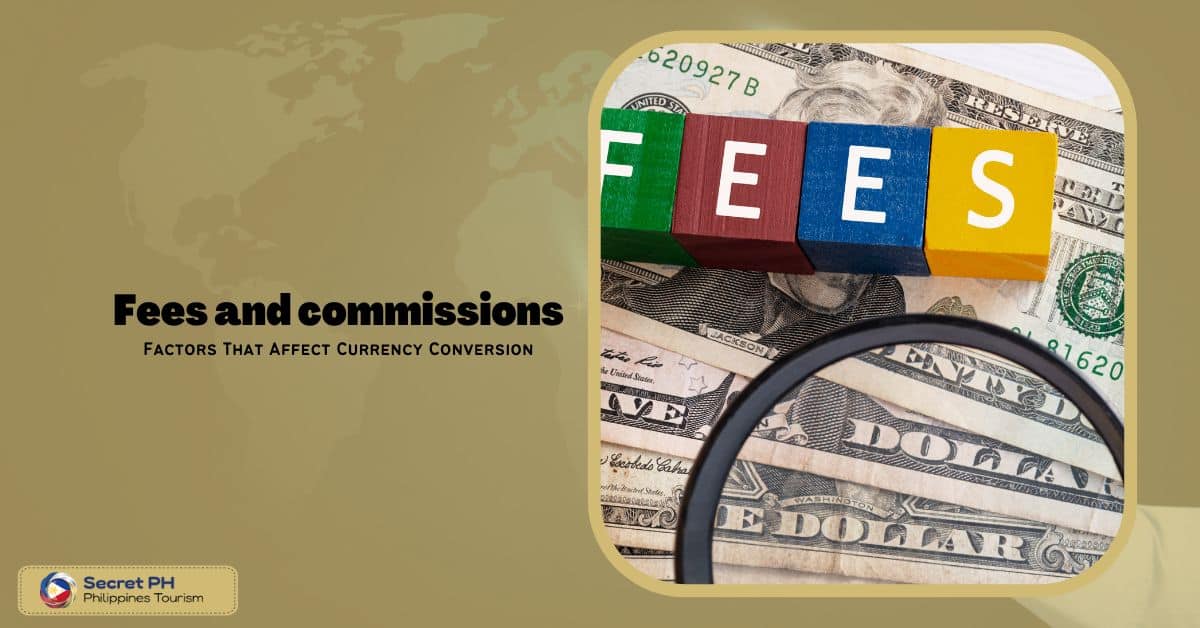
Hidden charges
Currency conversion in the Philippines can be tricky, as there are many hidden factors at play that can affect the final cost. These hidden charges often come in various forms and are not always apparent at first glance.
Certain types of credit cards may have additional fees when used for overseas transactions, which will include a currency conversion rate added to the final price. Other fees may include bank-charged transaction fees or even ATM withdrawal fees while using foreign ATMs.
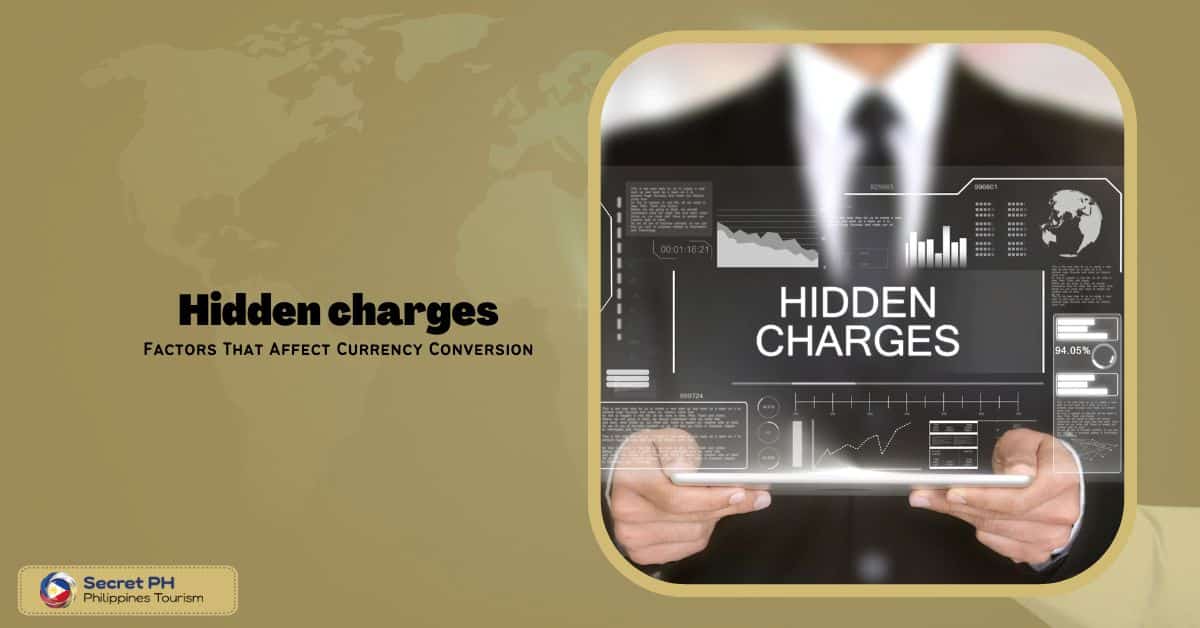
Transaction limits
Philippines travelers who are planning on exchanging money for a trip abroad should be aware of potential transaction limits. Many banks and money exchange bureaus in the Philippines place imposed ceilings, or transaction limits, on the amount of cash that can be exchanged in one single go. This can be inconvenient for bigger trips as multiple transactions will need to be made every time the limit is reached.
It’s important to do your research and shop around beforehand to find the best deal and determine whether any transaction limits are likely to affect you. Knowing the conditions associated with each particular money exchange window prior to embarking on your journey can help you avoid any inconvenient surprises while trying to make large currency conversions abroad.
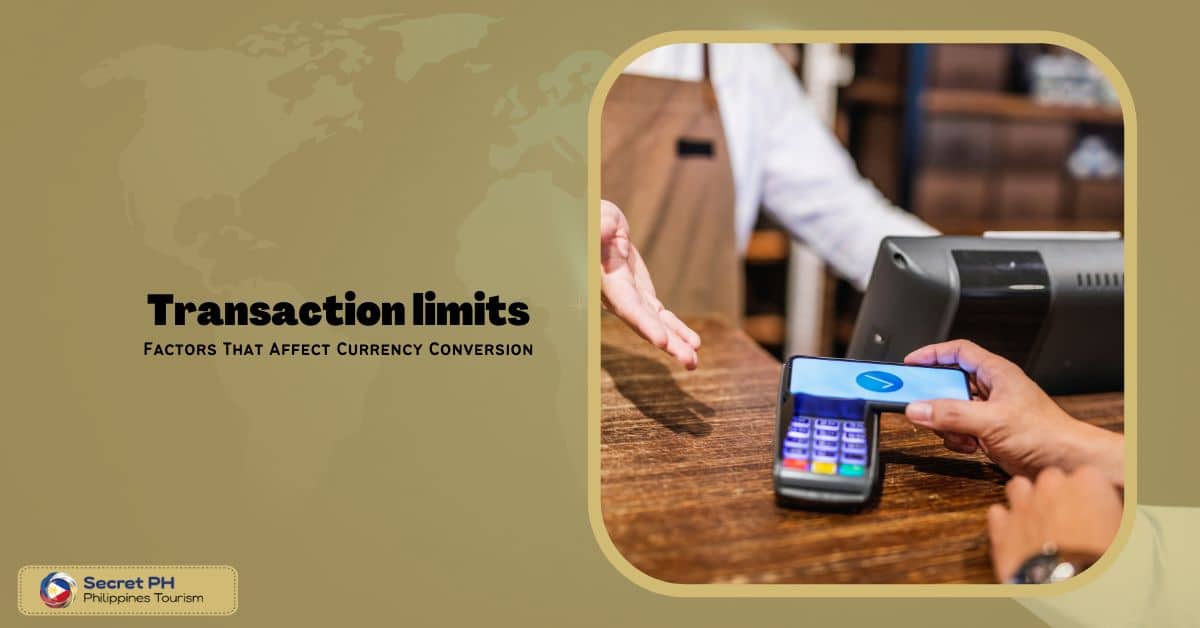
Insider Tips for Mastering Currency Conversion in the Philippines
Currency conversion in the Philippines can be daunting to those unfamiliar with economic markets, but mastering it is far from impossible. Many factors affect the exchange rate, and understanding them can help you save a considerable amount of money over time. Here are some tips for mastering currency conversion in the Philippines:
Research and compare currency conversion options before traveling
If you are planning a trip to Philippines, it is important to research and compare currency conversion options before departing. Currency values fluctuate constantly and it may significantly affect how much of your money you can use on your travels. It pays to comparison shop between exchanges as different rates and fees may apply depending on the provider and method used.
As such, be sure to check online resources in order to get an overall picture of the market rate so you know what offers may truly be worth taking. Moreover, getting up-to-date information is paramount as any false assertions or assumptions could lead to a an undesirable exchange rate.
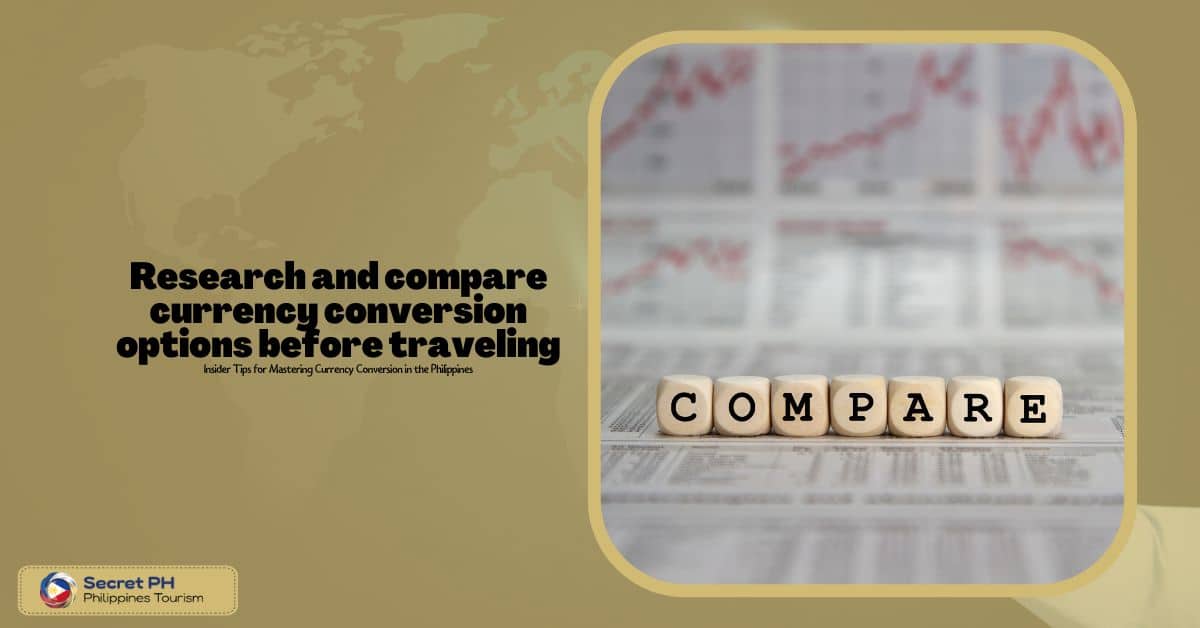
Use ATMs over money changers to get a better exchange rate
Those who are looking for a competitive rate on currency exchange should consider using an ATM in the Philippines. Through ATMs, travelers have the ability to access their accounts and withdraw money from banks abroad before arriving in Philippines.
This approach can be beneficial as ATMs typically offer better conversion rates than money changers, enabling travelers to save money in the process. Moreover, change machines only accept certain foreign currencies which limits the possibilities of comparison that’s essential when deciding which option is most lucrative.
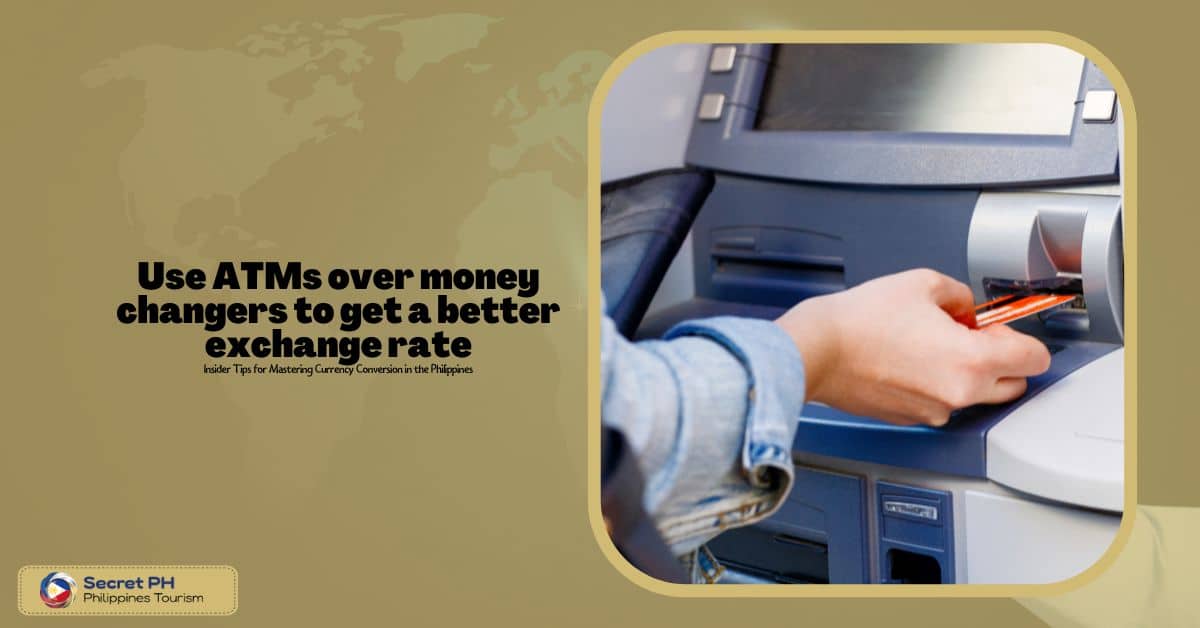
Use credit cards instead of cash when possible to avoid fees and charges
Credit card transactions come with minimal foreign currency conversion costs compared with alternatives such as cash exchanges. Mastercard and Visa are both widely accepted in the Philippines, meaning that you won’t incur significant conversion fees if you use them.
Having your purchases logged by a credit card company means that you have some measure of assurance should something go wrong. Although it might be inconvenient for those not used to carrying credit cards abroad, it remains the best way to omit unnecessary costs when travelling in the Philippines.
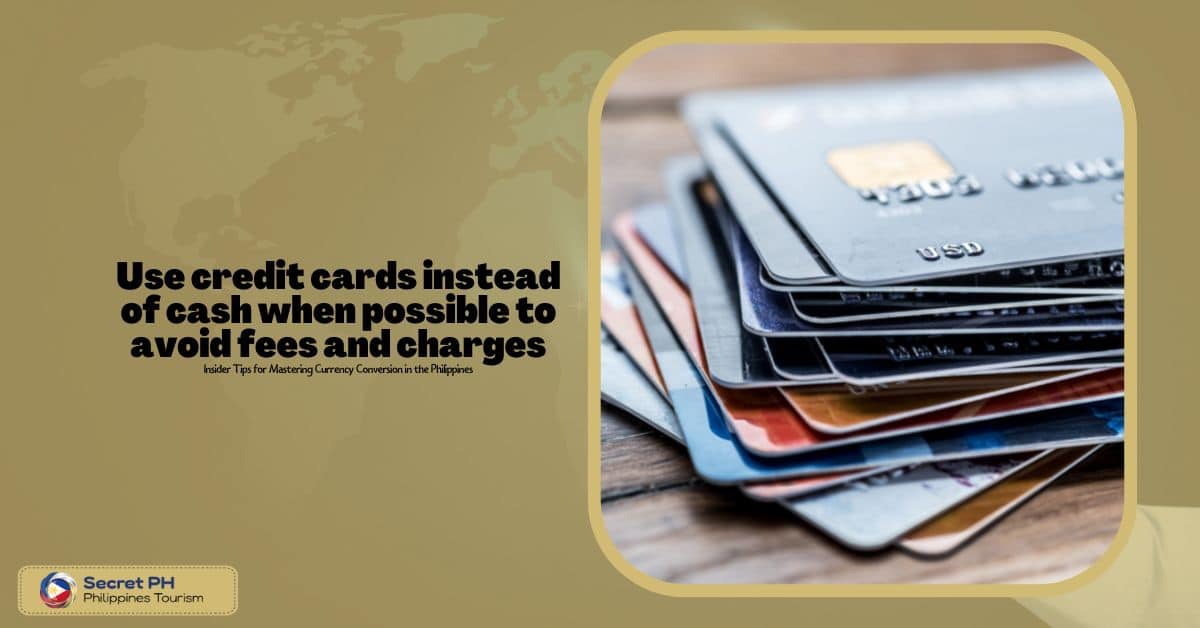
Notify your bank and credit card company of your travel plans
Whenever you’re traveling to The Philippines, it is important to make sure that your bank and credit card companies are aware of your travel plans. This will help in limiting any unexpected holds or declines on any of your cards due to irregular activity.
Without this notification of your whereabouts, credit companies could think your cards were compromised and freeze them until further investigation is made. To avoid any issues with finances while in a different country, be sure to give the necessary contacts ahead of time a heads up about your international trip.

Be aware of potential scams and frauds when exchanging currency
When exchanging currency in the Philippines, it’s important to be aware of potential scams and frauds. It is necessary for visitors to Philippines to stay vigilant in order to ensure successful transactions without any loss of money or valuable items.
Many criminals are keen on targeting tourists, so it’s best to inquire about good exchange centers before making any transfers. It is beneficial to familiarize yourself with Philippines’ currency policies in order to understand what type of notes have been accepted or rejected by financial institutions before attempting a transaction.

In Conclusion
Philippines has a complex currency system. Mastering currency conversion in the Philippines can be daunting but with the right knowledge and tips, it doesn’t have to be! Understanding the Philippines Peso exchange rate, learning commonly used terminology, and considering the cost of different payment methods are all essential components for success when converting. With these insider tips and tricks you can now confidently master currency conversion in the Philippines.

